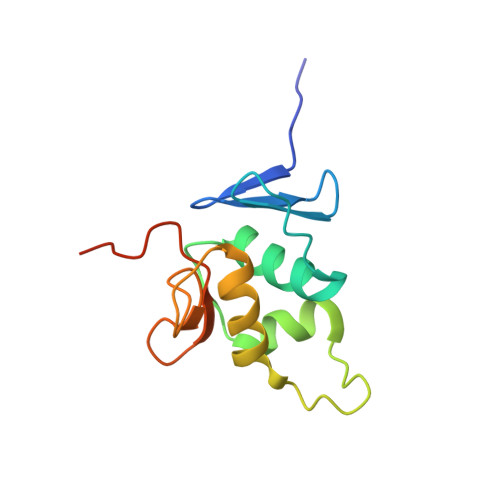The Structure of the Biofilm-controlling Response Regulator BfmR from Acinetobacter baumannii Reveals Details of Its DNA-binding Mechanism.
Draughn, G.L., Milton, M.E., Feldmann, E.A., Bobay, B.G., Roth, B.M., Olson, A.L., Thompson, R.J., Actis, L.A., Davies, C., Cavanagh, J.(2018) J Mol Biol 430: 806-821
- PubMed: 29438671
- DOI: https://doi.org/10.1016/j.jmb.2018.02.002
- Primary Citation of Related Structures:
2NAZ, 5HM6, 6BR7 - PubMed Abstract:
The rise of drug-resistant bacterial infections coupled with decreasing antibiotic efficacy poses a significant challenge to global health care. Acinetobacter baumannii is an insidious, emerging bacterial pathogen responsible for severe nosocomial infections aided by its ability to form biofilms. The response regulator BfmR, from the BfmR/S two-component system, is the master regulator of biofilm initiation in A. baumannii and is a tractable therapeutic target. Here we present the structure of A. baumannii BfmR using a hybrid approach combining X-ray crystallography, nuclear magnetic resonance spectroscopy, chemical crosslinking mass spectrometry, and molecular modeling. We also show that BfmR binds the previously proposed bfmRS promoter sequence with moderate affinity. While BfmR shares many traits with other OmpR/PhoB family response regulators, some unusual properties were observed. Most importantly, we observe that when phosphorylated, BfmR binds this promoter sequence with a lower affinity than when not phosphorylated. All other OmpR/PhoB family members studied to date show an increase in DNA-binding affinity upon phosphorylation. Understanding the structural and biochemical mechanisms of BfmR will aid in the development of new antimicrobial therapies.
Organizational Affiliation:
Department of Molecular and Structural Biochemistry, North Carolina State University, Raleigh, NC 27695, USA; Department of Discovery Sciences, RTI International, 3040 E. Cornwallis Road, Research Triangle Park, NC 27709, USA.














